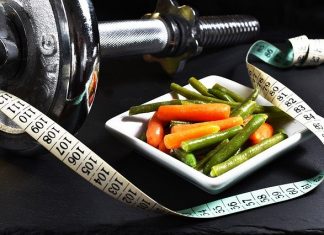A new study suggest that women who want to conceive should avoid heavy drinking. Even consuming a moderate amount of alcohol in the second half of the menstrual cycle lowers the chances of being pregnant.
The research, published in the journal Human Reproduction (Anwar et al., 2021), investigated alcohol consumption and the probability of conceiving during a single menstrual cycle.
This is the first research to examine the impact of alcohol on the women’s ability to be pregnant during particular phases of the menstrual cycle, using daily data on alcohol and unprotected sex throughout up to 19 menstrual cycles. The researchers obtained all data from The Mount Sinai Study of Women Office Workers (MSSWOW).
Pregnancy Difficulty and Drinking

Women often face difficulty seeking pregnancy. For example, in the USA, 12% of the US couples experience difficulty conceiving or delivering live birth (Chandra et al., 2013). Among risk factors, alcohol consumption has become under increased scrutiny in recent research.
In 2011, a review of 36 case studies by Patra et al. found that heavy drinking during pregnancy may increase the risk of low birth weight, preterm birth, and small gestational age (SGA) (Patra et al., 2011). Another review of nineteen observational studies involving 98657 women also found that alcohol consumption was related to diminished pregnancy ability (Fan et al., 2017).
Compared to this well-documented research on the harmful impact of alcohol consumption on being pregnant, some studies reported no tangible detrimental effect on alcohol consumption.
Despite the inconsistency among some previous studies, Dr. Kira Taylor and colleagues explored whether alcohol consumption may affect the specific phase of the menstrual cycle, such as pre-ovulatory, ovulatory, and luteal that may confer more significant risk to reduced chances of pregnancy.
Heavy Drinking Reduces the Odds of Pregnancy by 61%

In the study, researchers defined heavy drinking as consuming more than six alcoholic drinks a week. Consuming three to six a week was defined as moderate drinking. Binge drinking was defined as consuming four or more drinks on a single day. Each drink consisted of approximately one-third of a liter of beer (355 mL), a medium glass of wine (148 mL), or just under a double shot of spirits (44 mL).
The study recruited women aged 19-41 years between 1990 and 1994 and followed for a maximum of 19 menstrual cycles. The participants recorded daily consumption of alcohol, including the types. They also gave urine samples on the first and second day of each menstrual cycle to check for pregnancy.
The researchers also collected data on age, medical history, smoking, obesity, birth control methods, and intention to become pregnant. At the end of the study, data on 413 participants were available for analysis.
They found that heavy drinking during any menstrual cycle phase was significantly associated with a reduced probability of conception compared to non-drinkers.
Compared to absentees, both moderate and heavy drinking during the luteal phase was linked to reducing the chance of conceiving by 44%. Moreover, heavy drinking during the ovulatory part of the cycle was related to a 61% reduced odds of becoming pregnant.
“At the time of ovulation, often around day 14 of the cycle, consuming a lot of alcohol – both heavy or binge drinking – was considerably associated with reduced chances of conception”, mentioned Dr. Tailor.



















